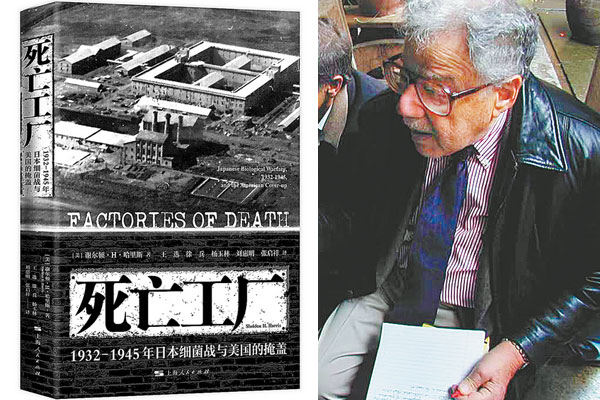
The affidavit was never produced as evidence, nor was the man allowed to testify during court proceedings of the IMTFE, ostensibly modeled on the International Military Tribunal in Nuremberg that tried Nazi war criminals.
Yet the affidavit was constantly brought up in written communications not only between the Americans and the Russians, the latter pushing for its inclusion in the trials, but also among the American prosecutors of the IPS, the military intelligence officials under General Douglas MacArthur's occupation authorities and those in Washington.
One of these declassified documents, kept at the US National Archives in College Park, Maryland, was an intelligence report dated Aug 1, 1947 and circulated within the State-War-Navy Coordinating Sub Committee for the Far East. (The State-War-Navy Coordinating Committee, a precursor to the US National Security Council, was a US federal government committee created in December 1944 to look at political and military issues related to the occupation of the Axis powers once World War II ended.)
The report, titled Interrogation of certain Japanese by Russian prosecutor, includes four appendixes. The Karasawa affidavit appears in Appendix A-"facts bearing on the problem". Elsewhere, the conclusion of the report is unequivocal:"The value to the US of Japanese BW (biological warfare) data is of such importance to national security as to far outweigh the value accruing from 'war crimes' prosecution."
This document can be found in the six-volume Compilation Of Historical Documents On Japanese Biological Warfare During WWII, published in 2019 and coedited by Wang Xuan, a Chinese researcher, and her Japanese counterpart Shoji Kondo.
"Imperial Japan's employment of biological weapons in China was full-scale, and unprecedented in human history," Wang, 69, said. "Its unspeakable cruelty can be glimpsed from the devil's deal, struck between Unit 731 scientists and the Americans who coveted their information."
Ishii said that if the Americans could provide him and his associates with documentary immunity from prosecution for war crimes, much more would come their way. This would include "photomicrographs of selected examples of 8,000 slides of tissues from autopsies of human and animals subjected to BW experiments", as listed in Appendix A.

"Most distressing is the fact that the ultimate disclosure in the mid to late 1940s of Japanese BW human experimentation did not appall those individuals who were apprised of these criminal acts," wrote Harris in the preface of his groundbreaking book Factories Of Death: Japanese Biological Warfare, 1932-1945, and the American Cover-up. "Instead, the disclosure whetted the appetites of scientists and military planners among both the victors and the vanquished."
During Harris' research for the book in the late 1980s, he located in the Dugway Proving Ground Library three of the "20 huge autopsy reports relative to their (the Japanese's) experiment with humans". The Dugway Proving Ground, about 140 kilometers southwest of Salt Lake City, Utah, is a US Army facility established in 1942 to test biological and chemical weapons.
The Harris book, which Wang describes as "the very first comprehensive scholarly research that brings to light the American cover-up", was first published in 1994. The history professor at California State University, Northridge, would spend nearly all of his subsequent waking hours adding to it. A revised edition was published in 2002, shortly before he died in August that year.